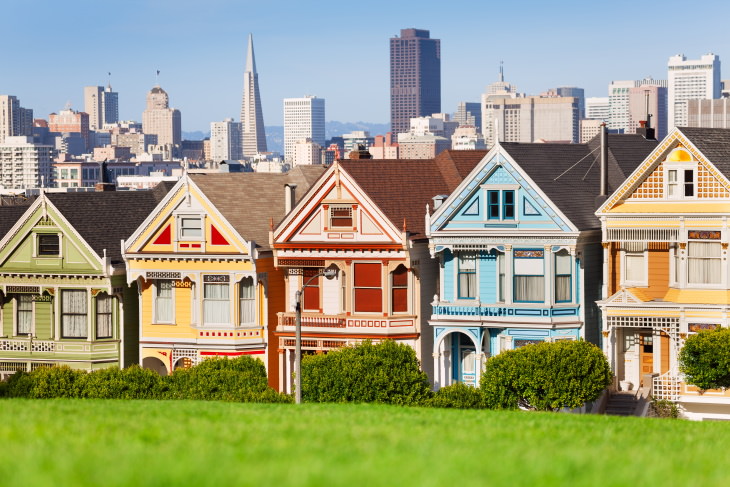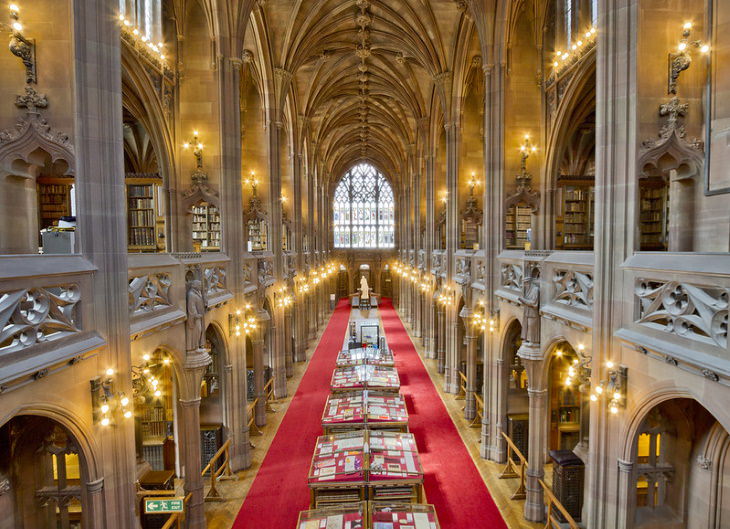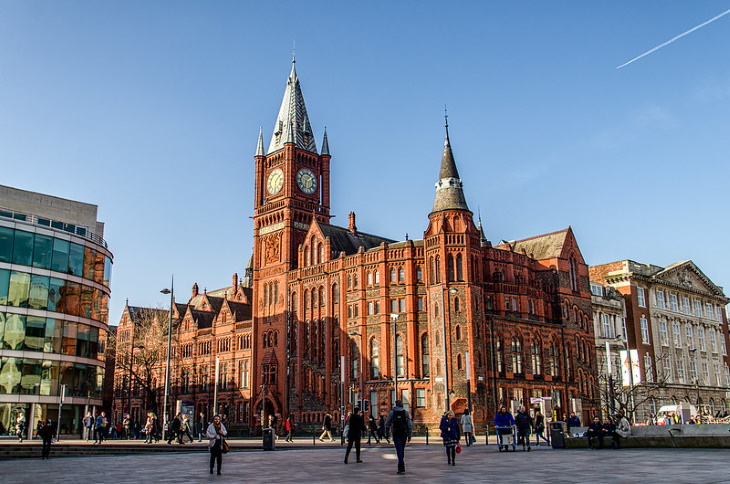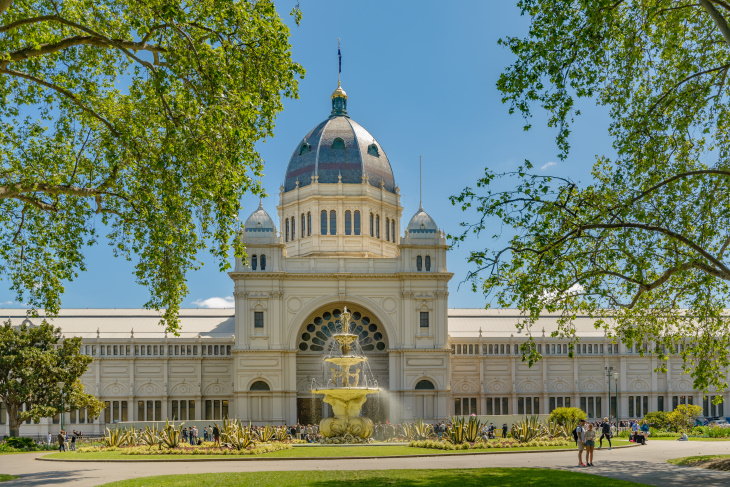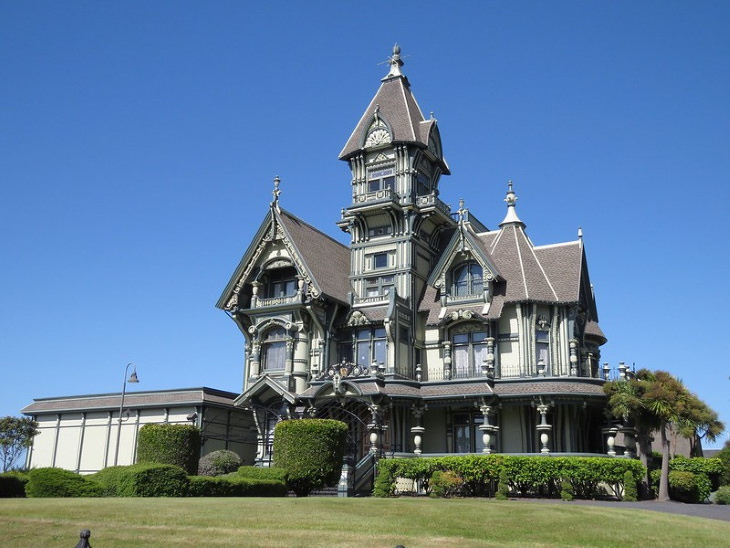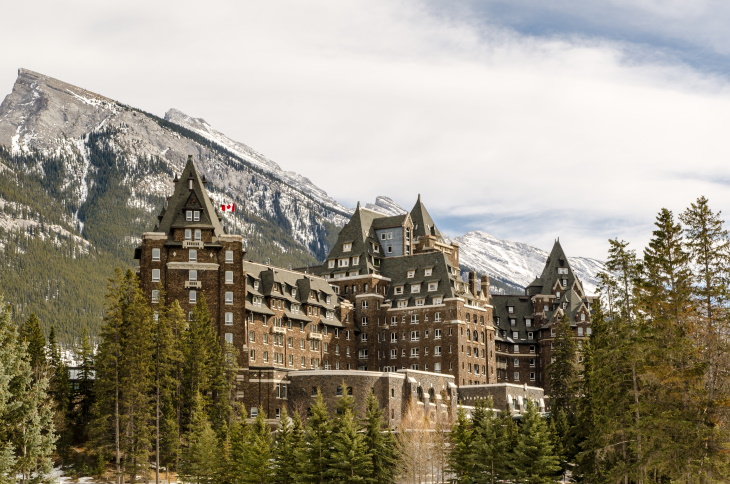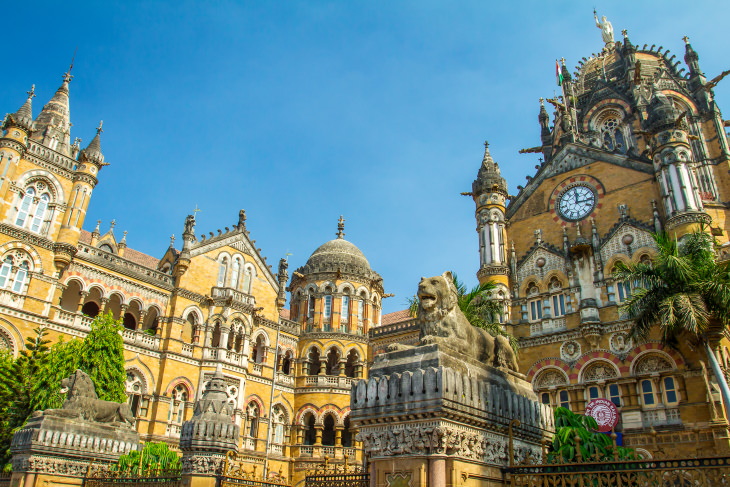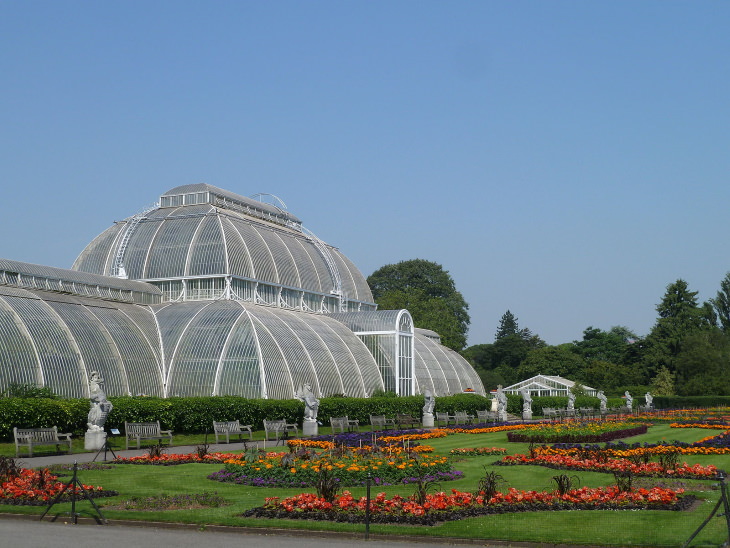1. Palace of Westminster, London, UK (1840-1870)
The Palace of Westminster is one of the most instantly recognizable buildings in the world and a symbol of London. The building acts as the House of Parliament of the UK and has a long and tumultuous history; since its initial construction in the 11th century, the Medieval palace had sustained multiple fires.
After the devastating fire of 1834, two famous architects - Charles Barry and Augustus Pugin - were tasked to reconstruct the palace. It is this Victorian-era reconstruction that gave the Palace of Westminster its famous Gothic Revival-style look. With its iconic four-faced clock, the Elizabeth Tower (better known as Big Ben) came to be the building’s most famous detail. In 1987, the Palace of Westminster became a UNESCO World Heritage Site.
2. The Painted Ladies, San Francisco, California, USA (1892-1896)
San Francisco has many architectural marvels, but none of them are as famous as the "Postcard Row" of Victorian townhomes in Alamo Square. Constructed in the 1890s by Matthew Kavanaugh on Hayes and Steiner Streets, San Francisco’s Painted Ladies are world-famous, even though their vibrant color palette isn’t actually a common feature of Victorian architecture.
In a way, this beautiful row of Victorian- and Edwardian-era homes is an homage to San Francisco’s architectural history. Prior to the 1906 earthquake, there were over 40,000 historic-style houses in the city. Many of these old homes were destroyed by the fire, but many more were also demolished or remodeled in the subsequent decades.
3. John Rylands Library, Manchester, England, UK (1890-1899)
The library building was commissioned in 1889 by Enriqueta Augustina Rylands in memory of her late husband, Manchester’s first multimillionaire and Britain’s largest textile manufacturer at the time - John Rylands. The Gothic Revival masterpiece has a cathedral-like structure and includes elements of Art Nouveau metalwork.
In 1972, the building became part of The University of Manchester. Today, the John Rylands Library houses a priceless collection of rare books and manuscripts. It is said to be the third-largest academic library in the entire country.
4. The Victoria Building, University of Liverpool, England, UK (1889-1892)
The Victoria Building was built to house the University of Liverpool. Constructed by the architect Alfred Waterhouse, the structure is built from red brick - inspiring the English term “red brick university” that is synonymous with a civic university.
In 2008, the building has undergone a complete renovation and turned into the Victoria Gallery and Museum. Today, the Victoria Building houses an art gallery and the historical artifacts of the University of Liverpool.
5. Royal Exhibition Building, Melbourne, Australia (1879-1880)
The opulent Royal Exhibition Building in Melbourne stands at the city center adjacent to the Melbourne Museum, and it is one of the last remaining 19th-century exhibition halls in the world. Envisioned by the architect Joseph Reed, the exhibition building was designed specifically for the first international fair held in Melbourne in 1880.
At the time, the city of Melbourne had been the capital of Australia, and the astonishing structure was meant to communicate the wealth and growth of Australia to all visitors. During the 1990s, the building has undergone a complete restoration, and in 2004, it became the first building to become a UNESCO World Heritage status in Australia.
6. The Carson Mansion, Eureka, California, USA (1884-1886)
The Carson Mansion was designed by the most celebrated Victorian architects in the US - Samuel Newson and Joseph Cather. No wonder the building is considered to be the grandest Victorian home in the entire country. The mansion was commissioned by William Carson, one of the first big lumber barons in California.
The structure is made of materials taken from different corners of the planet: redwood from California, white mahogany from Central America, and onyx from Mexico, East India, and the Philippines. In 1950, the Carson family estate closed the deal to sell the mansion to the Ingomar Club as a private clubhouse. Since then, the mansion and the adjacent gardens have been closed to the public.
7. The Balmoral Castle, Royal Deeside, Scotland, UK (1852)
The Balmoral Castle is one of the greatest Victorian masterpieces. After all, the Scottish castle belonged to the famous Queen Victoria herself. The queen and Prince Albert purchased the castle as private property in 1852 and commissioned the talented architect William Smith to expand the castle considerably.
Today, Smith’s design is regarded as the finest Scots Baronial revival building in the world. It is said that Prince Albert himself overlooked the construction and made his own additions to the plan of the building. Only the ballroom exhibition and the gardens of Balmoral Castle are available for tourists, but only the members of the royal family can enter the castle itself.
8. Fairmont Banff Springs, Banff, Canada (1886-1927)
This is another example of the Scottish Baronial Revival style, even though it is located far from Scotland - in the heart of Banff National Park, in Canada. The massive building is a magnificent amalgamation of a hotel and a castle envisioned by the architect Walter Painter, who built the current structure after the original hotel was badly damaged during a fire.
The Fairmont Banff Springs Hotel is among the first of several grand railway hotels in Canada, and it welcomes guests to this day.
9. The Royal Albert Hall, Kensington Gore, London, UK (1867-1871)
Ever since it was opened in 1871, the Royal Albert Hall has been one of the premiere performance venues in all of Britain. The Royal Albert Hall was planned and finished in 4 years based on the design of Captain Francis Fowke and Major Henry Y.D. Scott. The iconic building was inaugurated by Queen Victoria herself in memory of her late husband Prince Albert.
The Italianate-style hall is an ellipse with a glazed-iron dome and a massive terracotta mosaic showing "the Triumph of Arts and Sciences" running around the facade of the building. To this day, the famed concert hall hosts the most important musical performances, ceremonies, and sports events in the UK.
10. The Chhatrapati Shivaji Terminus, Mumbai, India (1878-1888)
The Chhatrapati Shivaji Terminus is a historic railway station in Mumbai. It is one of the best examples of Victorian architecture outside of the UK and the US. Defined as Bombay Gothic style, the building is an eclectic combination of Victorian Gothic elements with traditional Indian design. The architect Frederick William Stevens planned out this masterpiece as the heart of the Great Indian Peninsular Railway that connects Mumbai and mainland India.
The building was initially called the Victoria Terminal, but it was eventually renamed in honor of the 17th-century Indian ruler Shivaji. The intricate wood carvings, the pointed arches, and metalwork on the turrets and other parts of the building, in particular, were inspired by Indian architecture.
11. Palm House, Kew Gardens, Royal Botanic Gardens, Richmond, UK (1844-1848)
Let’s end this list on a pretty unique architectural masterpiece - the Palm House at the Royal Botanic Gardens. Designed by Decimus Burton and constructed under the supervision of Richard Turner, this greenhouse was an unbelievable engineering marvel at the time of its construction.
As the name suggests, this greenhouse was built to housing tropical and subtropical plants. To create the ultimate conditions for these plants, the greenhouse was the first structure in the world to be built without any supporting columns. It is made entirely out of wrought iron and glass. In fact, the structure resembles a hull of a ship turned upside down because Burton used shipbuilding principles to create this innovative structure.
This stunning greenhouse accepts visitors to this day and is definitely worth a visit. The Palm House has many rare botanical gems, including the world’s oldest potted plant.
Share these beautiful buildings with others!


